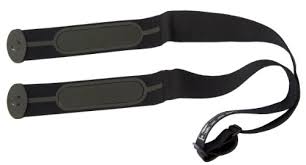By Warren Kozireski–
Do you think you are in shape? Compare your numbers to these:
A normal resting heartrate is between 60-100 beats-per-minute (BPM) according to the American Heart Association. Using a heart rate monitor belt strapped around their chest during Division I hockey games, RIT players on the ice during games see heart rates at times exceeding 195 beats per minute.
Again according to the American Heart Association, a 20-year old’s average maximum should be 50-85% of their maximum heart rate, which is 200 beats per minute.
Digital monitoring of players is now starting to infiltrate all levels of Division I hockey as both an in-game tool and a training tool after starting with the pros.
TRIMP is the acronym commonly used. It stands for Training Impulse and quantifies the intensity of exercise. Other statistics monitored by the software include heartrate, percentage of heartrate maximum and calories burned.
So how does this help a college hockey player?
“The reason we use this system is we’re trying to ask educated questions and make educated decisions,” RIT Strength and Conditioning Coach and former College at Brockport and Greece hockey player Nat VanKouwenberg said. “It’s objective data, but we still need to use it subjectively.
“We basically have to say ‘what’s this data telling us about each athlete and what’s this data telling us about the team and how can we potentially modify what we’re doing to make us as fresh as possible?’
“Basically we take a look at how (each player) is compared to the team average and, if they’re really low, we can ask questions like why they are really low? Are they not working hard, which is traditionally not the answer, or are they sick, tired or stressed where they cannot produce that much output or things like that. If they’re really high, we ask why such as are they not being really efficient from a skating standpoint.
From a team standpoint we use the TRIMP to look at training session intensity and then look at the week as a whole. We take the TRIMP and the duration of the session whether it’s on-ice practice, work-out or game and then we get our TRIMP density, which is how intense that practice was.
“We have that data from the whole entire year so now we can say on Monday’s we want to be about here and Tuesday’s we want to be here so that we’re fresh on Friday and Saturday.
“We’ll ask the players and they might say that it was a really tough practice and we’ll see if the TRIMP supports that or the same with the coaches’ perception.”
On the software visible to a coach in the press box during the game, each player has their own box with the four measurable elements. Every box is grey in color if the player’s heartrate in below 100 and changes color as it escalates to green at 100+, light blue at 120, dark blue at 140, yellow at 165 and red when over 185.
“The other things we look at is their heartrate intensity and their recovery and how quickly they can get back out there. The good thing about having it in games is we can look between periods and see how each player is recovering and cross that with the game situations like more penalty kill time or they aren’t skating as well or as much.”
“Some guys love it and want to see it every single period or every game or practice. Some guys hate it and think it restricts them because they’re so used to playing without it. Originally I think they worried and thought we were going to use it against them like this guy is out of shape or this guy isn’t ready to go. Really our goal is to make sure we’re doing the right things to make sure they’re fresh for Friday and Saturday.”
With giant screen TV’s set up in the weight room, peer pressure can also help players push themselves especially in the offseason.
“Traditionally in a shift we see guys are (in the) red, which is 93-94% of their max where they are going as hard as they can. And that’s really the type of game hockey is. You go as hard as you possibly can for a few seconds and coast to the next situation, go hard and coast and then go sit down for a few minutes. It’s a very, very unique sport when comes to the conditioning standpoint, so we can use this data to our advantage.”
The perception might be that forwards skate more and faster so would likely have higher heartrates than a defenseman who might not cover as much ice or that a goalie doesn’t expend a lot of energy so would have a comparatively lower rate, but that is not true.
Goaltenders can also reach the 180+ beats per minute during games and this can be attributed to the intensity and maybe a stress or nervousness standpoint.
“Our guys up in the booth laugh sometimes at what the heartrate of a new guy coming into the lineup will look like, so it’s not just about how hard they work, but it tells us a lot about their emotional and psychological state too.”
One shared anecdote is of a first year player in his first game having a heartrate of over 150 BPM during the national anthem.
Professional hockey teams have been using these systems for many years, but they are just starting to creep into all levels of Division I hockey after starting obviously with the larger, big-budget schools mainly due to the cost, which can be in the tens of thousands at the start. Individual monitors for each player cost over one hundred dollars to replace when they inevitably break or when updating the recommended every two years.
And this software and monitoring is fast becoming ubiquitous, at least at some levels.
“One AHL (American Hockey League) team I know has one belt for the rink and one belt for home and every one is in the cloud on their home wireless, so during the day they have to get a reading of their resting heartrate…and coaches get that.
“But it’s still a game. If your best player is gassed, are you going to bench him? There is still the art of coaching, it is still a game, but there is that one percent of how can we gain advantage and make sure our guys are healthy.
“It’s a part of my job that few people know about and I wasn’t originally trained for that didn’t really exist even five years ago, VanKouwenberg said.”







